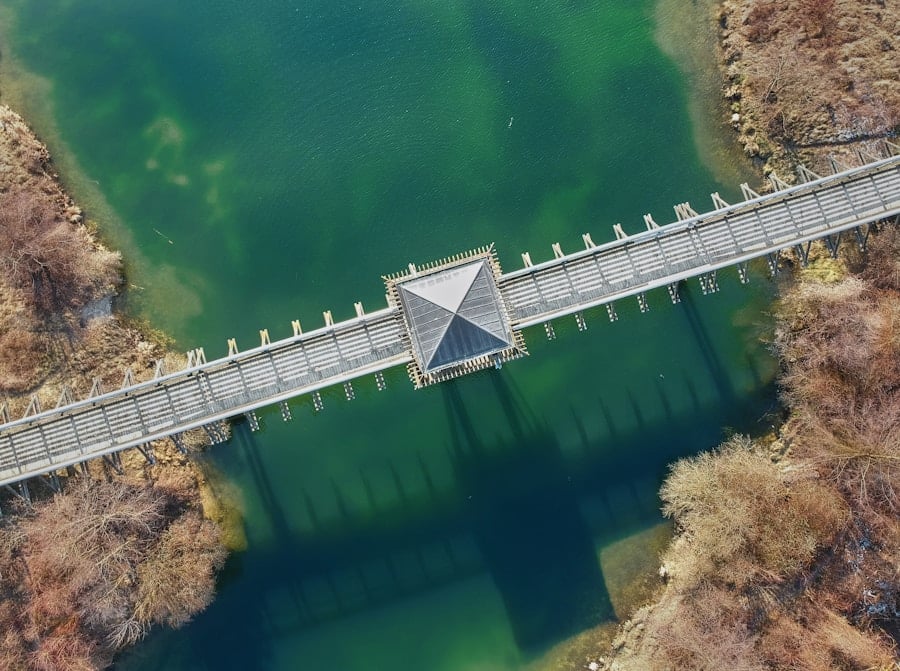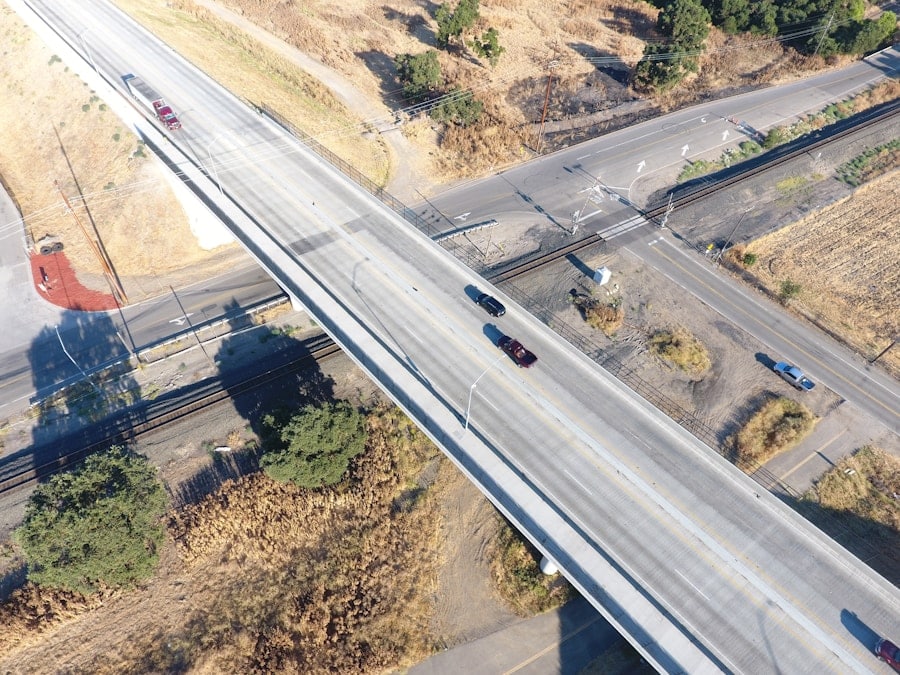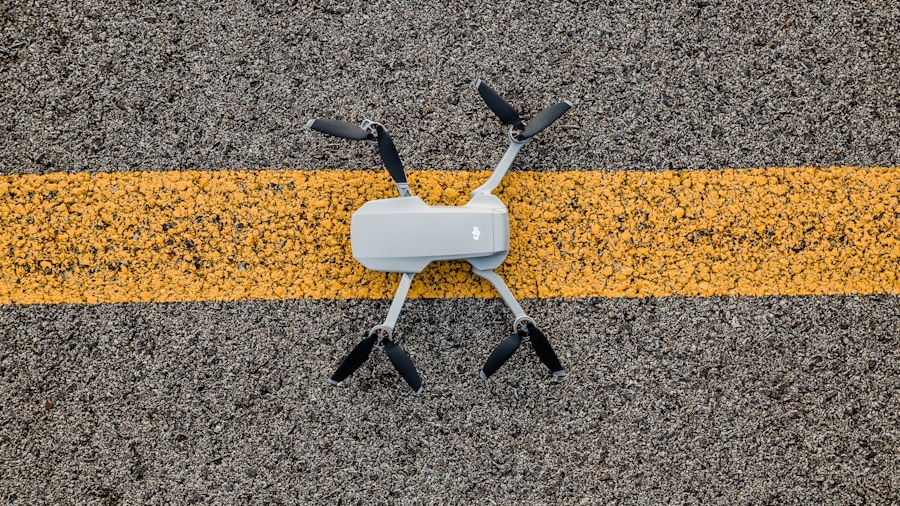The advent of drone technology has revolutionized various sectors, and infrastructure safety audits are no exception. Drones, or unmanned aerial vehicles (UAVs), have emerged as a powerful tool for conducting road and bridge safety audits, offering a level of efficiency and precision that traditional methods often lack. These aerial devices are equipped with high-resolution cameras, LiDAR systems, and other advanced sensors that enable them to capture detailed images and data from perspectives that are difficult or dangerous for human inspectors to reach.
As infrastructure ages and the demand for safe transportation networks increases, the integration of drones into safety audits has become not just beneficial but essential. The use of drones in safety audits allows for a comprehensive assessment of structural integrity, identifying potential hazards before they escalate into serious issues. Traditional inspection methods often involve scaffolding, ladders, or even helicopters, which can be time-consuming and costly.
In contrast, drones can quickly survey large areas, providing real-time data that can be analyzed to inform maintenance decisions. This shift towards drone technology not only enhances the accuracy of inspections but also significantly reduces the time and resources required to conduct thorough safety evaluations.
Key Takeaways
- Drones are increasingly being used for safety audits of roads and bridges to improve infrastructure maintenance and public safety.
- The use of drones for safety audits offers advantages such as cost-effectiveness, efficiency, and improved data accuracy.
- Drones collect various types of data including high-resolution images, videos, thermal imaging, LiDAR, and GPS data for safety audits.
- Challenges and limitations of using drones for safety audits include regulatory restrictions, weather conditions, and data processing complexities.
- Case studies demonstrate successful drone audits for road and bridge safety, showcasing the potential of drones in infrastructure maintenance.
Advantages of Using Drones for Safety Audits
One of the most significant advantages of employing drones for road and bridge safety audits is their ability to access hard-to-reach areas without putting human inspectors at risk. Bridges often have intricate designs with components that are elevated or located in precarious positions. Drones can easily navigate these challenging environments, capturing high-resolution images and videos that reveal structural conditions that might otherwise go unnoticed.
This capability is particularly valuable in assessing the condition of bridge decks, understructures, and other critical components that require close inspection. Moreover, drones can cover vast areas in a fraction of the time it would take a human team to conduct a ground-based inspection. For instance, a drone can fly over a long stretch of highway or a series of bridges in a matter of minutes, collecting data that would take hours or even days for a team on foot to gather.
This efficiency not only accelerates the audit process but also allows for more frequent inspections, which is crucial for maintaining safety standards. The ability to conduct regular assessments helps identify wear and tear early on, enabling proactive maintenance that can extend the lifespan of infrastructure.
Types of Data Collected by Drones for Safety Audits

Drones are equipped with various sensors and imaging technologies that enable them to collect a wide range of data during safety audits. High-resolution cameras are commonly used to capture detailed images of structural elements, allowing inspectors to analyze surface conditions such as cracks, corrosion, and other signs of deterioration. These images can be processed using photogrammetry techniques to create 3D models of structures, providing an invaluable tool for engineers and maintenance teams.
In addition to visual data, drones can also be outfitted with LiDAR (Light Detection and Ranging) systems that measure distances by illuminating a target with laser light and analyzing the reflected signals. This technology is particularly useful for mapping terrain and assessing the topography around roads and bridges. LiDAR data can reveal changes in elevation or shifts in ground stability that may pose risks to infrastructure integrity.
Furthermore, thermal imaging cameras can detect temperature variations in materials, which can indicate underlying issues such as moisture intrusion or insulation failures.
Challenges and Limitations of Using Drones for Safety Audits
Despite the numerous advantages of using drones for safety audits, there are several challenges and limitations that must be addressed. One significant concern is regulatory compliance. The operation of drones is subject to strict regulations imposed by aviation authorities in many countries.
These regulations often dictate where and when drones can be flown, as well as the qualifications required for operators.
Another challenge lies in the technical limitations of drone technology itself.
While drones are capable of capturing high-quality images and data, factors such as weather conditions can significantly impact their performance. High winds, rain, or fog can hinder visibility and affect flight stability, potentially compromising the quality of the data collected. Additionally, battery life remains a limitation; most commercial drones have a flight time ranging from 20 to 30 minutes before needing to be recharged or replaced.
This constraint can limit the scope of inspections, particularly for larger infrastructures that require extended flight times.
Case Studies of Successful Drone Audits for Road and Bridge Safety
Several case studies illustrate the successful application of drone technology in road and bridge safety audits. One notable example is the use of drones by the New York State Department of Transportation (NYSDOT) during inspections of aging bridges across the state. By integrating drone technology into their inspection protocols, NYSDOT was able to significantly reduce inspection times while enhancing the quality of data collected.
The drones provided high-resolution imagery that allowed engineers to identify structural issues more accurately than traditional methods. Another compelling case is found in the work conducted by the Colorado Department of Transportation (CDOT), which employed drones to assess the condition of bridges following severe weather events. After heavy snowfall and subsequent melting caused concerns about structural integrity, CDOT utilized drones to quickly survey multiple bridges across the state.
The aerial inspections revealed critical information about ice buildup and potential structural damage that could have posed risks to public safety. The rapid deployment of drones allowed CDOT to prioritize maintenance efforts effectively and ensure that necessary repairs were made promptly.
Regulations and Guidelines for Using Drones in Safety Audits

Compliance and Safety Considerations
For organizations looking to implement drone technology for safety audits, it is crucial to stay informed about these regulations and ensure compliance at all levels. This may involve training personnel in safe drone operation practices, obtaining necessary permits for specific flight areas, and maintaining records of inspections conducted using drone technology.
Privacy Concerns
Organizations must consider privacy concerns related to drone usage, particularly when operating in populated areas or near private properties.
Staying Informed and Adapting to Change
As the regulatory environment surrounding drone usage continues to evolve, organizations must stay informed about changes to regulations and adapt their practices accordingly to ensure ongoing compliance and safety.
Future Trends and Innovations in Drone Technology for Safety Audits
As drone technology continues to advance, several trends are emerging that promise to enhance their application in road and bridge safety audits further. One significant trend is the integration of artificial intelligence (AI) into drone systems. AI algorithms can analyze vast amounts of data collected during inspections, identifying patterns and anomalies that may indicate structural issues.
This capability not only streamlines the analysis process but also enhances predictive maintenance strategies by allowing organizations to anticipate potential problems before they arise. Another promising innovation is the development of autonomous drones capable of conducting inspections without direct human control. These drones can be programmed to follow specific flight paths and perform inspections based on pre-defined criteria.
This level of automation could significantly reduce labor costs while increasing inspection frequency and accuracy. Additionally, advancements in battery technology may lead to longer flight times and improved payload capacities, enabling drones to carry more sophisticated sensors and equipment for comprehensive data collection.
The Role of Drones in Improving Road and Bridge Safety
The integration of drones into road and bridge safety audits represents a significant advancement in infrastructure management practices. By leveraging aerial technology, organizations can conduct thorough inspections more efficiently while enhancing data accuracy and reducing risks associated with traditional inspection methods. As regulatory frameworks evolve and technological innovations continue to emerge, the role of drones in ensuring road and bridge safety will likely expand further.
The future holds great promise for drone technology in this field, with potential applications ranging from routine inspections to emergency assessments following natural disasters or accidents. As stakeholders recognize the value that drones bring to infrastructure safety audits, we can expect broader adoption across various sectors, ultimately leading to safer roads and bridges for all users.
A related article discussing the return of Instagram’s founders to the social media scene can be found at this link. The article explores the insights that can be gained from their comeback and how it may impact the future of social media platforms.
FAQs
What are drones used for in road and bridge safety audits?
Drones are used to conduct aerial inspections of roads and bridges to assess their condition and identify any potential safety hazards. They can capture high-resolution images and videos, allowing inspectors to closely examine the infrastructure without the need for physical access.
How do drones improve road and bridge safety audits?
Drones provide a cost-effective and efficient way to conduct safety audits by reducing the need for manual inspections and minimizing the risk to inspectors. They can access hard-to-reach areas and provide detailed visual data that can be used to make informed decisions about maintenance and repairs.
What are the benefits of using drones for road and bridge safety audits?
Using drones for safety audits can result in time and cost savings, improved safety for inspectors, and more accurate and comprehensive data collection. Drones can also help to identify potential safety issues early, allowing for timely intervention and maintenance.
Are there any regulations or guidelines for using drones in safety audits?
Yes, there are regulations and guidelines set by aviation authorities that govern the use of drones for commercial purposes, including safety audits. These regulations typically include requirements for pilot certification, airspace restrictions, and safety protocols to ensure the safe operation of drones.
What are the limitations of using drones for road and bridge safety audits?
Some limitations of using drones for safety audits include weather conditions that may affect flight operations, limitations in battery life and flight time, and the need for skilled operators to maneuver the drones and interpret the data collected. Additionally, privacy concerns and public perception of drones may also be factors to consider.

